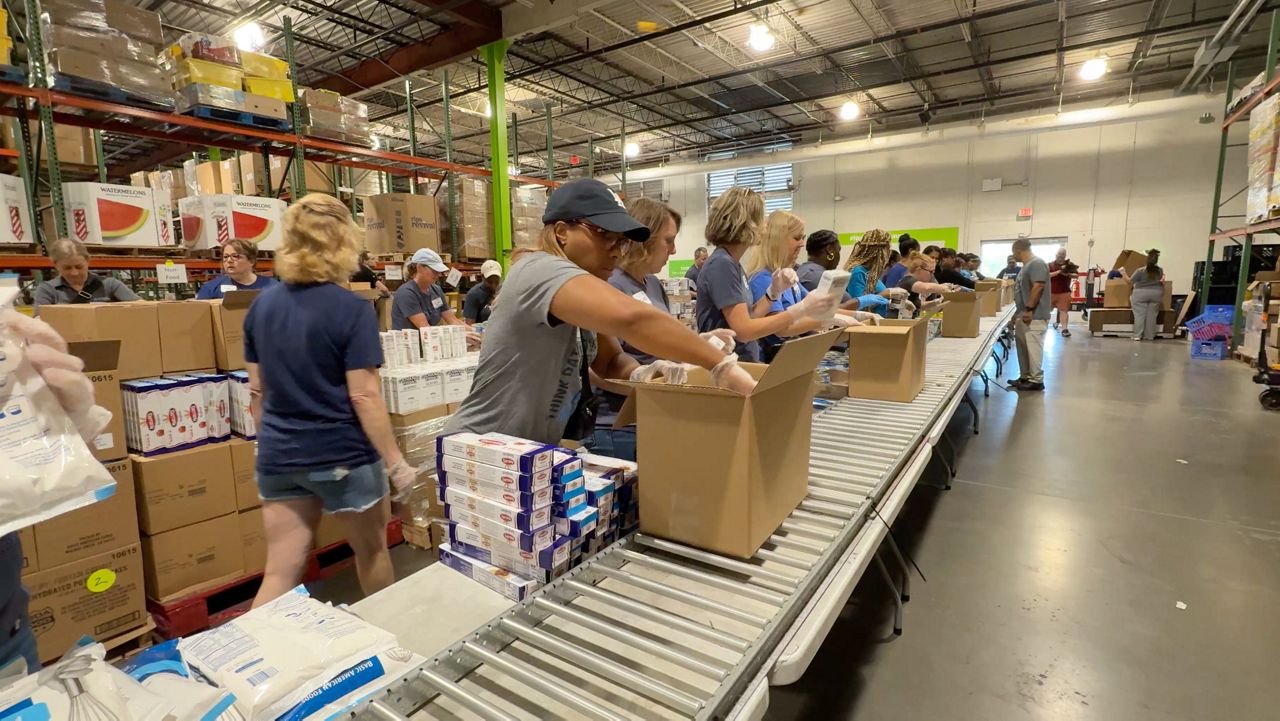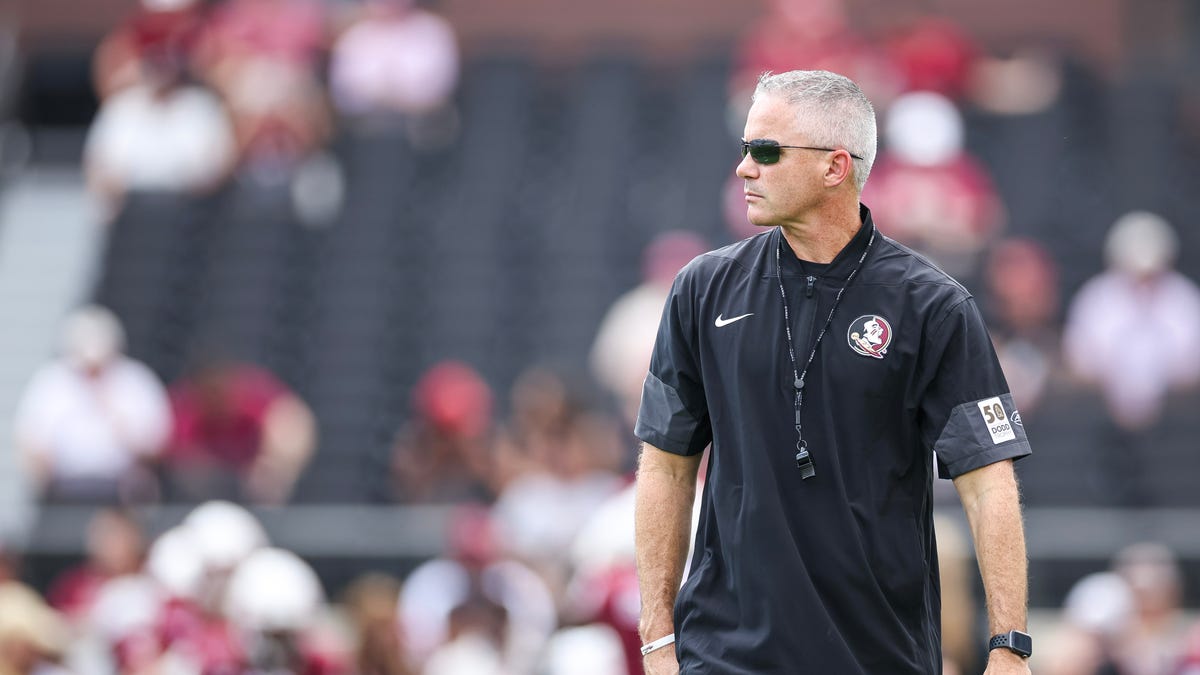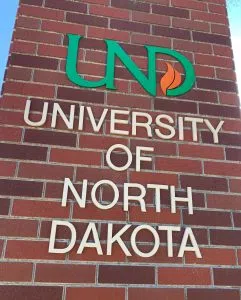Vermont
Vermont murder suspect arrested in New York

PORTLAND, N.Y. (WCAX) – Police say the suspect in a Vermont murder was arrested in New York on Wednesday.
Terrence Biggs Jr., 25, of Michigan, was wanted in the deadly shooting of Austin Rodriguez, 26, of Rutland. It happened at a home on Summer Street on April 22.
Investigators say state police in New York arrested Biggs during a traffic stop in Portland, New York, that is in western New York, early Wednesday morning.
Biggs is charged with second-degree murder.
We still don’t know what authorities think led to the shooting or what the connection was between the two men.
Copyright 2025 WCAX. All rights reserved.

Vermont
Vermont shelter celebrates 68 adoptions in one month

Vermont
A covered bridge quest in Vermont – VTDigger


This story by Tim Calabro was first published in The Herald on Sept. 11, 2025.
Phill Gatenby rolled over the Moxley Bridge in Chelsea with a plastic skeleton riding shotgun in his Jeep, having made the long drive from Brattleboro for an early morning visit. Just a year ago, the Manchester, England native — by way of Florida — had never laid eyes on a covered bridge. Now he’s smitten.
Gatenby recalled seeing a covered bridge while driving around and thinking, “Oh, that’s interesting. I’d never seen a covered bridge in my life before. Never really heard of them,” he said. “A couple days later, I was going to Townshend, and all of a sudden it’s the Dummerston Bridge, and I’m just like, different size, different shape, different color.”
He stopped for directions and as he got lost on the back roads, he saw more and more covered bridges.
What started as casual curiosity has evolved into a quest: visit and film all 100 of Vermont’s authentic, historic covered bridges and share the journey on YouTube in a series titled “Vermont’s 100 Covered Bridges.”
So far he’s been to 50 and cranked out 37 videos of his visits — one every Sunday.
The most recent set of episodes has focused on the covered bridges of Tunbridge, Chelsea, and Randolph.
No two are quite alike. From king and queen trusses to parallelogram-shaped spans built on bends, like some on the First Branch, Gatenby has come to appreciate their variety and character.
And, stepping back from the bridges, the entire scene fascinates Gatenby.
“I mentioned this in the Kingsbury Bridge [episode]. I was at the bridge and I looked, and you’ve got the green mountains in the background and rolling hills. Then you’ve got the farm with the — is it the corn towers? — the river and a covered bridge. And it just says, like, you can’t get more Vermont!”
Gatenby’s process is rigorous. Each episode takes hours to shoot and edit. He gets different angles — sometimes driving through a bridge three or four times for the right shot. He’s waded into rivers, climbed steep banks, and once filmed inside a long-retired bridge that had been turned into a town shed.
“I try and do something that’s consistent,” he says. “So it’s, you know, the same start, the same middle. I go in the river. I’ve been in every single river so far.”
Gatenby credits community access TV stations — first Okemo Valley TV in Ludlow and now Brattleboro Community TV — for helping him build his skills and loaning him equipment.
“They literally brilliantly sat down and five, six, seven weeks went through how you do it,” he recalled.
Gatenby’s episodes go out via Okemo Valley TV’s YouTube channel and have regular times on the Okemo Valley and Brattleboro TV stations.
Form, Function, History
Vermont once had more than 600 covered bridges, Gatenby noted, but flooding and age have winnowed down the number greatly. Now, 100 remain and many towns hold clusters of them.
Tunbridge, for example, boasts five (Flint, Larkin, Mill, Cilley and Howe), with the Moxley bridge just over the Chelsea line. Randolph has three (Kingsbury, Gifford, and Braley or Johnson), all of them along the Second Branch.
Gatenby pointed out that three of the First Branch bridges were built by the same person, Arthur Adams. That’s a phenomenon common to covered bridges, Gatenby noted. Oftentimes the same person who had the skills to build a bridge would become the area’s go-to expert.
As Gatenby visits each of the 100 covered bridges spread throughout the state, he points out the history and construction techniques used in each, particularly the suspension methods unique to covered bridges. Most covered bridges in the White River Valley make use of modified king trusses, posts fitted into a triangle, which provide strength to the structure. Some, like the Moxley bridge, use both king trusses and square queen trusses around them.
Vermont’s covered bridges aren’t just structural relics, though — they’re cultural icons.
Some have graced the silver screen, including the Kingsbury Bridge in Randolph, used by Alfred Hitchcock as scenery in his 1955 film “The Trouble with Harry.”
“North by Northwest” has its dramatic crop duster strafing Cary Grant, Gatenby jokes in one of his episodes before cutting to a humble, scenic shot featuring the South Randolph bridge. “Unfortunately, it wasn’t quite as glamorous as that!”
The Chiselville bridge in Sunderland — Gatenby’s favorite so far — featured in “Baby Boom,” Diane Keaton’s 1987 film, and a year later, in the 1988 Chevy Chase and Madolyun Smith Osborne comedy, the Upper Falls bridge in Weathersfield made for a memorable gag (“I wouldn’t go that way if I were you”).
Another memorable stop is East Corinth, where the prop bridge used in “Beetlejuice” was fabricated out of whole cloth for the two weeks of filming. “Thousands of people go there every year,” he said, noting that the set-piece, used now as a shed at a ski area, doesn’t count among the authentic and historic bridges he films.
Nor, he said, does the Quechee Bridge. Though it is often mistaken for a traditional covered bridge, it’s just a facade.
“It’s concrete and steel. There’s very little wood,” Gatenby said. “You see the wood on the outside and the roof.”
Traditional bridges are completely made from wood and use a variety of truss systems to strengthen the span.
Place and Purpose
Gatenby moved to Vermont from Florida in July of last year. He now lives in Brattleboro with his wife and works as a shift supervisor at a home for adults with mental health issues.
“I’m a trained youth worker in England,” he said, having spent years working for the Prince’s Trust, a charity founded by King Charles. His day job might be demanding, but the early hours leave room for exploration.
“Three o’clock to 11:30 at night, so the daytime allows me to spend time in the TV studio,” he says. That flexibility has enabled him to squeeze in long road trips, sometimes filming six or seven bridges in a single day. “I’ve got to do minimum six, seven bridges each trip now,” he added. “To make it worth it.”
This Sunday, the show’s 38th episode will be released.
“I’m doing a little special 50th episode,” he said, noting the halfway point in the 100-bridge journey. “That’s where I’m bringing in stuff like the Quechee bridge. Because people said, ‘Oh, you didn’t go to the Quechee.’”
As the series nears its midpoint, Gatenby’s audience is slowly growing, both online and in the communities he visits.
“It’s just amazing … you know, and I’m just visiting them all,” he said, “places that I wouldn’t have got to see otherwise.”
With 50 more bridges to go, Vermont’s covered bridge guy still has miles to travel and stories to uncover.Gatenby’s series of covered bridge videos can be watched on Okemo Valley and Brattleboro public television stations or found on YouTube.
Vermont
Loss of SNAP-Ed program leaves gaps in Vermont’s food assistance network – VTDigger

The SNAP-Ed program — which focuses on nutrition education and overall wellness for people on food stamps — will end Sept. 30, cutting off hundreds of thousands of dollars in annual grants that supported programming across all Vermont counties, including recipe demonstrations, meal kits and active-living guides.
The program’s elimination was part of President Donald Trump’s sweeping budget adjustments that passed on July 4 in the One Big Beautiful Bill Act. As the state’s food assistance network finds its way through a new landscape of shortfalls, officials worry more residents will fall through the cracks.
SNAP-Ed is an extension of the U.S. Department of Agriculture’s Supplemental Nutrition Assistance Program, which has experienced a number of cuts across the board. Instead of providing funds for individuals to purchase food, SNAP-Ed’s much smaller grants focus on community education and initiatives to improve eligible households’ engagement with 3SquaresVT — Vermont’s name for the larger body of resources under SNAP.
“Just providing food for people is not the whole answer to food security,” said Suzanne Kelly, who was the SNAP-Ed coordinator at the Vermont Department of Health for a decade until last month. Her former position, and another related role, will soon be discontinued.
“SNAP-Ed is sort of that extra bit of information to really make sure that people can access the food, can use the food, and can enjoy it over time,” Kelly said.
The program is deeply focused on health outcomes, she said, including prevention of chronic conditions and disease, and promoting wellness through nutrition and exercise.
Kelly is concerned about the immediate impact on Vermonters.
“These are decisions that trickle down to the most vulnerable people in our communities,” she said.
Kelly referenced a SNAP-Ed needs assessment earlier this year that identified certain populations in the state with a disproportionately high need for food assistance, including rural Vermonters and people with disabilities. Outreach programs that meet people where they are geographically will be an especially big loss, Kelly said.
The end of SNAP-Ed has already had tangible effects in recent weeks, causing the imminent shutdown of a food pantry in Holland and contributing to the Vermont Foodbank’s recent staff cuts. Of the seven employees the food bank let go, three were specifically operating SNAP-Ed programs, according to Chris Meehan, the company’s chief impact officer.
Vermont residents received over $147 million in SNAP aid last year. The projected allocation for Vermont’s SNAP-Ed budget in 2026, which the Department of Health received May 30, was less than half a million. Five weeks later, Kelly learned that the program was canceled.
‘We’ll have to be really creative’
Meehan said the SNAP-Ed cuts will effectively end the Vermont Foodbank’s VTFresh program, which has reached every county in the state with initiatives to increase access and understanding around nutrition. The program provided a space for people to exchange knowledge about cooking, recipes and budgeting, and was often particularly useful for families, she said.
While the food bank employees who ran the initiative are no longer with the organization, the program’s existing resources will remain on the Vermont Foodbank website. VTFresh’s continuing presence, Meehan said, will be “more passive than active.”
Meehan is grateful for the infrastructure that VTFresh has left behind — it has been “transformational” for the food assistance network in the state, she said.
Denise Walton, a Concord resident who is a lead volunteer at Sid’s Pantry in town, said VTFresh recipe materials had been invaluable in allowing her community to make better use of fresh foods. It’s common, she said, for people to ask questions about how to prepare food as they’re taking it.
“I think people want to cook,” said Walton, who herself is on food stamps. “They may not have learned, or been taught, or had the time.”
Walton said she would keep trying to provide resources to help people fully use the food they’re receiving — but that it will be more challenging going forward.
“We’ll have to be really creative,” Walton said.
Vermont Foodbank’s situation is par for the course statewide at smaller food assistance providers.
The Vermont Garden Network will lose its dedicated nutrition educator, according to executive director T Hanson, one of only five staff at the organization. Come Alive Outside, a nonprofit which used SNAP-Ed funds to reach thousands of school-age kids in Rutland County with tips on how to stay active, has told its staff it may not have sufficient funds to pay everyone in six months, according to Executive Director Arwen Turner.
Meanwhile, in Burlington, the People’s Farmstand will continue as a purely volunteer effort, according to founding Director Nour El-Naboulsi. There hadn’t been salaried roles, he clarified, but they had previously been able to offer staff — primarily farmers — a stipend for their time. The organization offers free fresh produce (both self-grown and donated) at weekly open events but has also been conducting educational outreach through its Veggie of the Month program.
El-Naboulsi said the initiative features a combination of staple Vermont crops and “culturally relevant produce — things from Nepal, Somalia, Iraq (and) other places in the Middle East and East Africa.” The organization serves a relatively large proportion of immigrant and refugee populations, he said, and the program is designed to combine familiar food with information about how to prepare local produce.
With the loss of SNAP-Ed funding to the People’s Farmstand and sister organization Village Hydroponics, El-Naboulsi said he has had to reprioritize.
“We kind of lose the capacity to do supplementary education, recipe preparation, outreach,” he said.
‘A great return on investment’
Keith Robinson, a pediatric pulmonologist at UVM Children’s Hospital, emphasized a connection between SNAP-Ed and health outcomes for families. He’s the hospital’s vice chair for Quality Improvement and Population Health and built the provider’s screening platform for food insecurity.
“We are trying to go deeper and further upstream to make sure that we’re solving the root causes of food insecurity in Vermont,” Robinson said.
For him, nutrition education has been a big part of that work — that’s why the end of SNAP-Ed is such a blow, despite the small scale of previous funding.
“It’s gonna make communities potentially less healthy, and it’s also gonna create gaps in the systems that we need to have around families,” he said. “While the dollar value may not be great, the impact of those dollars is extraordinary.”
Robinson referenced a state report on SNAP-Ed last year, calling survey data that indicated diet and exercise changes for participants “a big deal.” Roughly a third of people who received direct nutrition education reported they ate more fruits and vegetables each day, and 20% said they exercised more, according to the report.
“That’s a great return on investment,” Robinson said.
Modifications and cuts to the SNAP program at large have been made in the name of eliminating “waste, fraud, and abuse” — a narrative that Kelly disputed.
“The strategies that are used (in SNAP-Ed) have shown outcomes — real outcomes,” she said.
A page addressing cost concerns on the USDA website references studies showing that for every dollar spent on SNAP-Ed and similar programs, 10 times that can be saved in future health care costs. The total nationwide cost of the program would have been $550 million in the 2026 fiscal year.
“It’s probably not the best idea to be cutting programs that are going to eventually help reduce costs way further down the line,” Kelly said.
The U.S. Department of Agriculture did not respond to requests for comment.
A document briefly detailing SNAP overhaul from the U.S. House Committee on Agriculture called SNAP-Ed a program that has wrought “no meaningful change” for its target population. The committee cited a 2019 report from the Government Accountability Office that appears to primarily conclude that the effectiveness of the program is difficult to properly evaluate due to uneven standards of reporting from state agencies and a lack of coordination at the federal level.
“When federal benefits get cut like this, we need to think about how to bolster connections in our community, and think differently about how to fill those gaps,” Robinson said.
Jeanne Montross, executive director of Helping Overcome Poverty’s Effects, or HOPE, in Middlebury, said her organization has been seeing the effects of staff and program cuts elsewhere in the state’s assistance networks. Montross’ nonprofit is primarily funded by private contributions.
“It always ends up flowing down to HOPE,” she said of increased need in her local community.
Anore Horton, executive director at Hunger Free Vermont, said the state’s food assistance network “cannot in any way mitigate the loss of all of these different sources of funding.”
Any solution to a problem of this scale must be “collective,” Horton said, but must also involve significant new assistance from the state government. But in a situation this urgent, Horton said it wouldn’t necessarily make sense for the state to replace nutrition education funding.
Walton said Sid’s Pantry has also been increasingly relying on community support and donations.
“We’re very fortunate to have a little buffering like that,” she said, “especially for an aging community that needs healthy food and needs access to things out in the rural areas.”
-

 World1 week ago
World1 week agoTrump and Zelenskyy to meet as Poland pressures NATO on no fly zone over Ukraine
-

 Technology1 week ago
Technology1 week agoNew Evite phishing scam uses emotional event invitations to target victims
-

 Health1 week ago
Health1 week agoDiabetes risk quadruples with use of popular natural remedy, study finds
-

 Politics1 week ago
Politics1 week agoHouse plans Thursday vote on government funding bill to extend spending through November
-

 Business1 week ago
Business1 week agoDisney, Universal and Warner Bros. Discovery sue Chinese AI firm as Hollywood's copyright battles spread
-

 Health1 week ago
Health1 week agoWho Makes Vaccine Policy Decisions in RFK Jr.’s Health Department?
-

 Finance2 days ago
Finance2 days agoReimagining Finance: Derek Kudsee on Coda’s AI-Powered Future
-

 Lifestyle1 week ago
Lifestyle1 week agoBobbi Brown doesn’t listen to men in suits about makeup : Wild Card with Rachel Martin


















